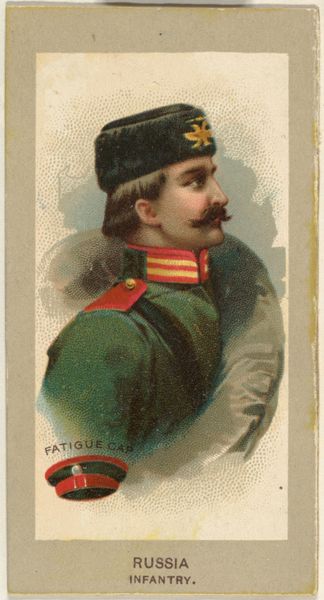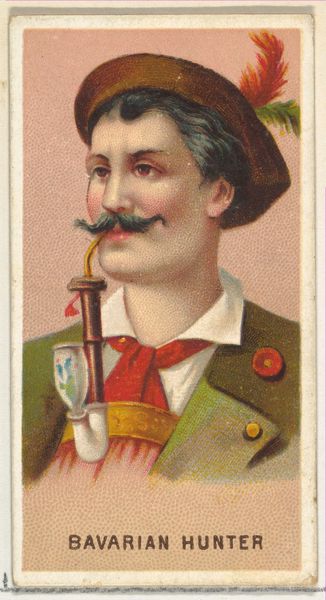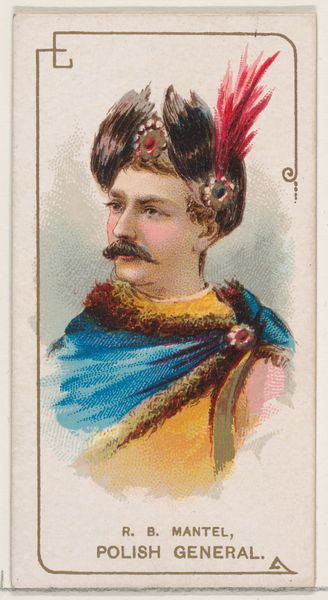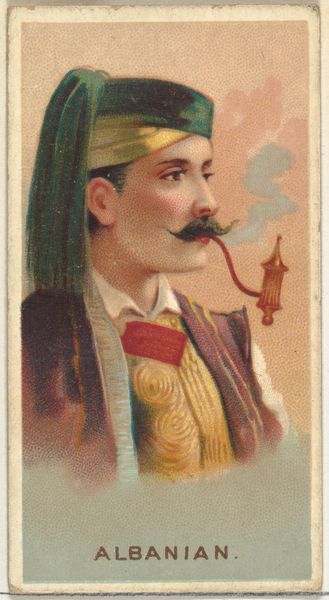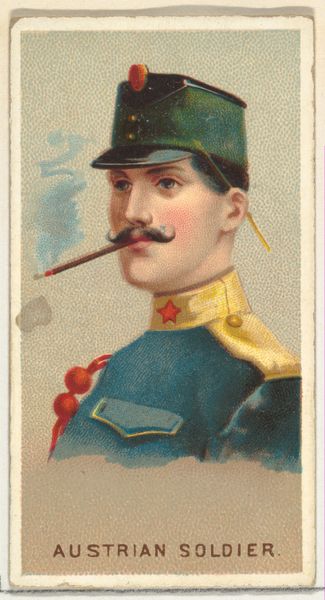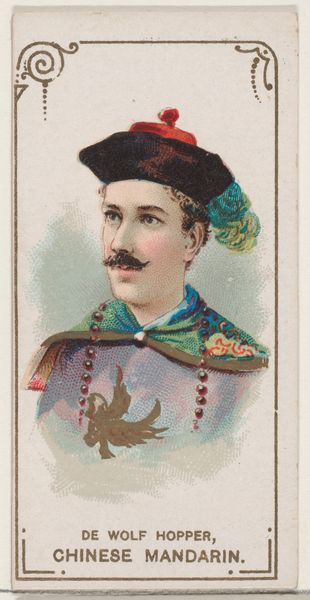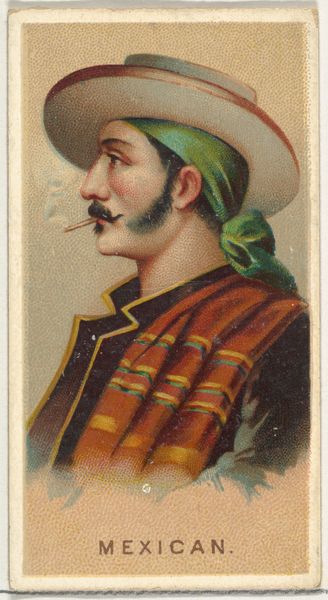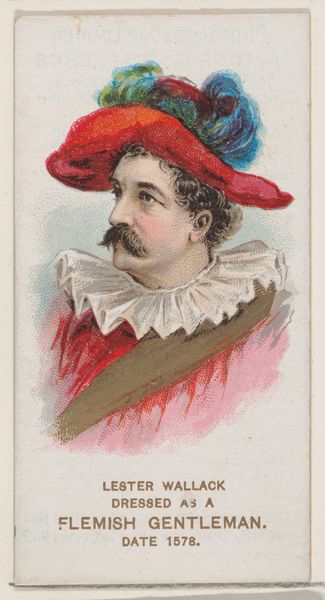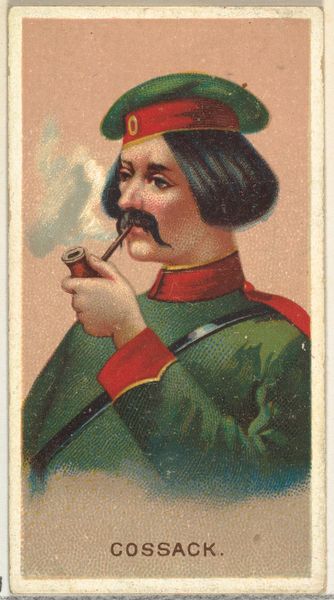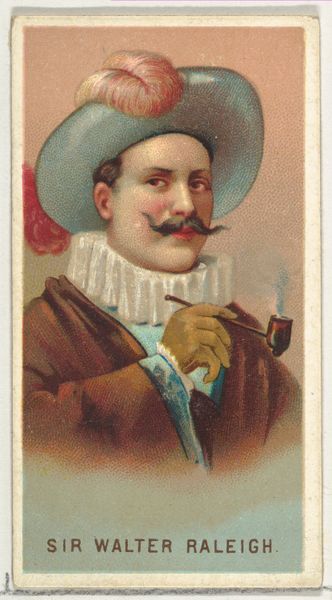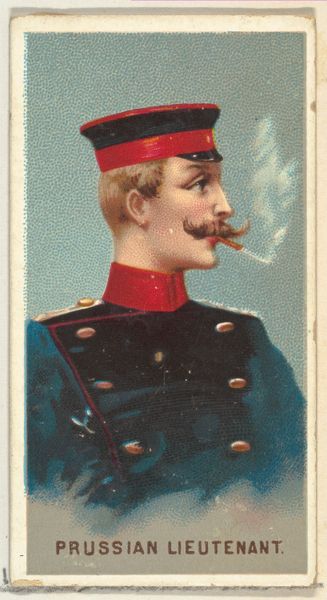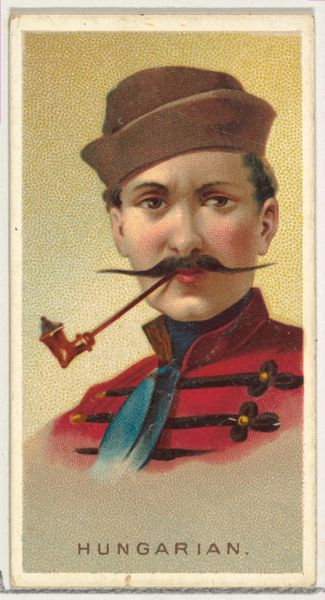
Greek, from World's Smokers series (N33) for Allen & Ginter Cigarettes 1888
0:00
0:00
#
portrait
# print
#
caricature
Dimensions: Sheet: 2 3/4 x 1 1/2 in. (7 x 3.8 cm)
Copyright: Public Domain
Curator: This chromolithograph is part of the "World’s Smokers" series (N33) produced in 1888 by Allen & Ginter for their cigarettes. It depicts a man identified as “Greek.” Editor: Immediately, I notice the odd proportions—a slightly caricatured figure almost detached from the pinkish background. It feels almost like an advertisement, stark in its visual rhetoric. Curator: Well, that's exactly its intent! Allen & Ginter utilized these cards as marketing tools inserted directly into cigarette packs. They were essentially early trading cards designed to encourage brand loyalty through collecting. The Ukiyo-e aesthetic aligns the product with notions of luxury and worldly culture through Japonisme trends. Editor: The Japonisme influence is clear. Structurally, the lines are incredibly defined, the subject tightly contained. I would also comment on the use of flattened space; no atmospheric depth creates visual interest solely within the subject's form and dress. The costume itself is rather detailed for such a small print. Curator: Absolutely. It demonstrates the period's fascination with ethnographic documentation – although often filtered through a lens of romanticism and, frankly, colonial interest. Series like “World’s Smokers” offered consumers a glimpse into different cultures while simultaneously promoting a specific brand of cigarettes. It reinforces the era's problematic exoticizing of foreign cultures for commercial consumption. Editor: It certainly places smoking, already a culturally charged act, into a context of global participation. There is a narrative implied beyond this subject by that curl of smoke and his stern gaze; a silent world of smokers, made visually alluring. Even the card format is fascinating: such intricate details for something so small, that would’ve surely been discarded over time, yet elevated as we gaze back. Curator: In retrospect, these small cards open up conversations about cultural exchange, commodity culture, and even early advertising techniques in ways I had not quite considered before this examination. Editor: Agreed. Deconstructing such commonplace items as these cards allows for a reexamination of the dominant ideologies that shaped its reception.
Comments
No comments
Be the first to comment and join the conversation on the ultimate creative platform.
